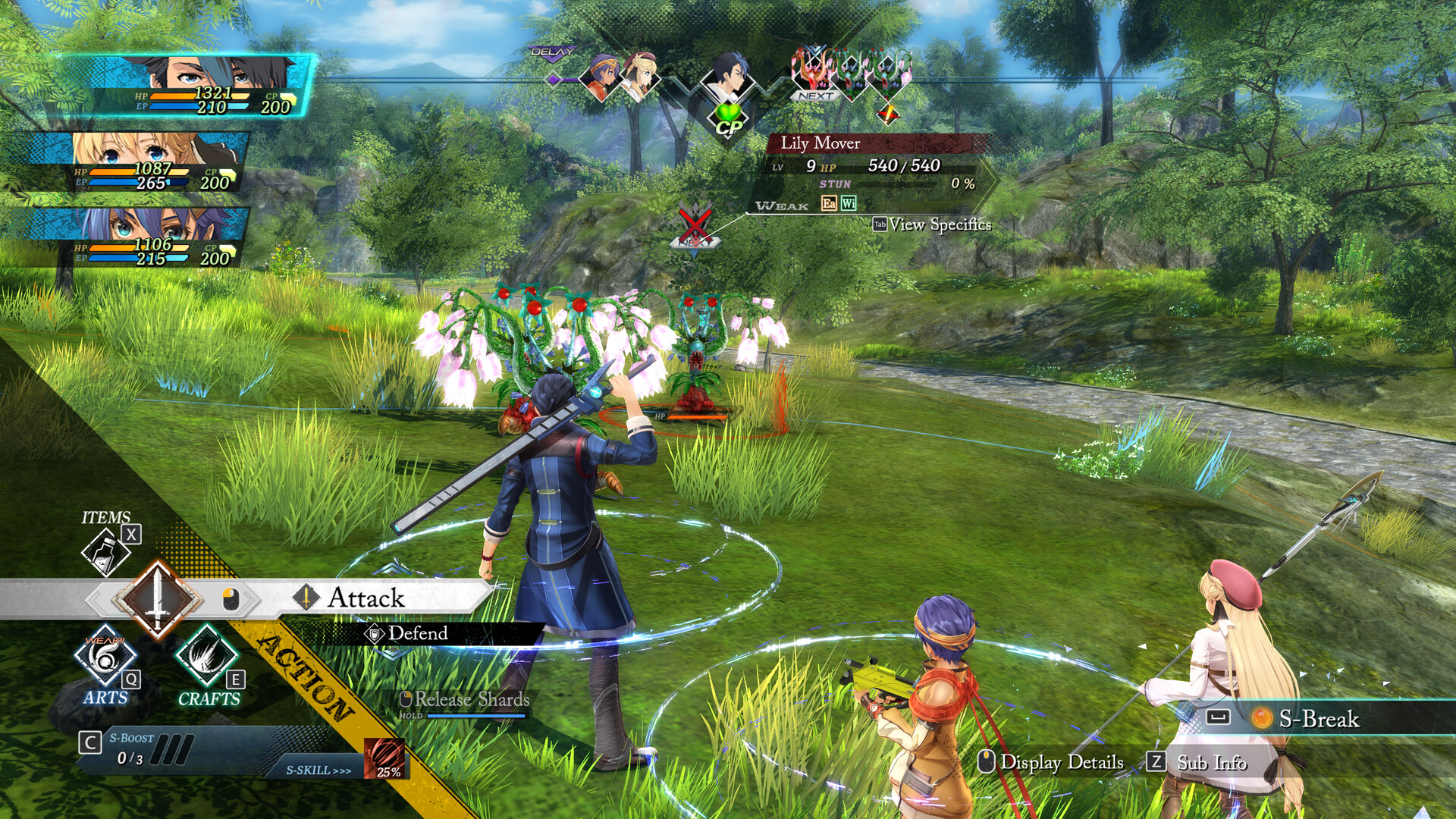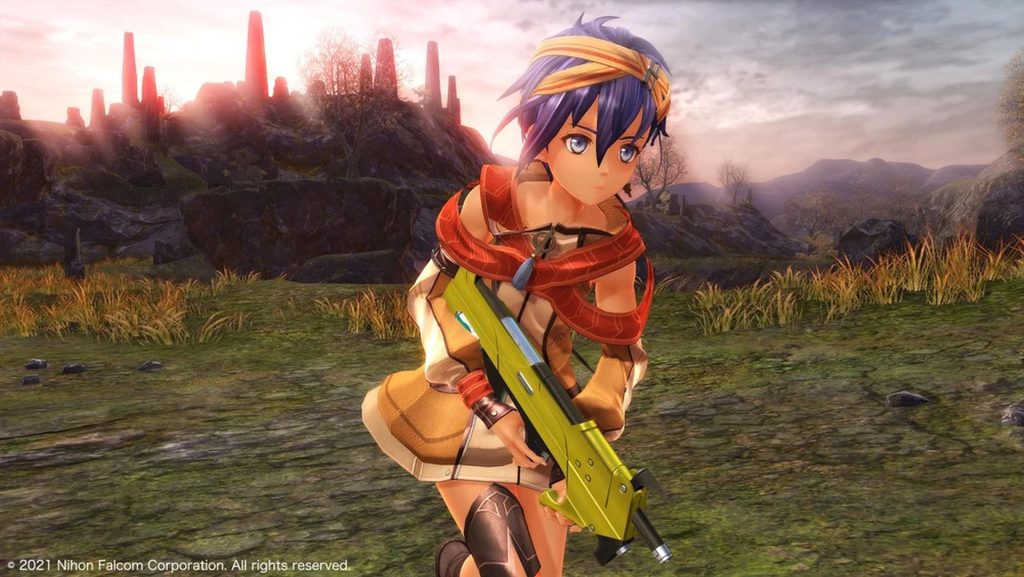Even if you’re a longtime fan of Falcom’s Kiseki or Trails series, there’s much to consolidate with each new entry. You could ignore its roots in Dragon Slayer: The Legend of Heroes from 1989, which had a sequel and an entire trilogy before even embarking on the current timeline of titles set in Zemuria, and still be confused. Don’t even get me started on how The Legend of Nayuta fits into all this. Even for those with a passing interest in the series, the Erebonian saga, Crossbell arc and Trails into Reverie are almost a must.
That’s why The Legend of Heroes: Trails through Daybreak arrives at such a pivotal point. It’s not a reset – far from it – and doesn’t shy away from the many, many connections to previous Trails titles. However, it is a clean slate in terms of the setting, characters and conflicts, setting the groundwork for a new story existing within the greater framework of the franchise. There’s also the new engine, finally bringing the series into a more contemporary graphical era (circa 2021), and revamped combat that incorporates real-time action into the usual turn-based commands with some twists and turns.
“Those world-threatening circumstances that the series is known for will emerge, but Daybreak does a great job setting the foundation, making you care about its new characters, and telling its story.”
While it’s not going to completely change your mind on everything you like or even dislike about the series, Trails through Daybreak is a new frontier, one more grounded and initially less epic than its predecessors. With a dash of Kamen Rider, ancient mysteries in the hands of teenagers and Cyber Elf-like beings, of course.
The story picks up two years after the Great Twilight and Operation Jormungandr. The Erebonian Empire, Crossbell State and the Calvard Republic are at relative peace with each other, with the latter especially thriving under the newly elected president Roy Gramheart. The underbelly of Edith, Calvard’s capital, is a completely different atmosphere, swelling with illicit deals, mafiosos and murders.
Meanwhile, Aramis High School student Agnes Claudel arrives at Arkride Solutions Office to enlist the help of a Spriggan, Van Arkride, to recover her late great grandfather’s missing orbment. Unlike the Bracer Guild or police, Spriggans often skirt the edge of the law to get things done. Van is especially noteworthy due to his manifold connections (in both the Guild and government, no less) but is otherwise easygoing. Things take a turn, however, when he embodies the powerful form of Grendel, and he chooses to “bear the Nightmare” at the behest of his AI, Mare, who mysteriously comes to life.
I’m glossing over many other plot points to avoid spoilers, but Trails through Daybreak takes a steady approach with the pacing. Edith and its inhabitants, like Van’s landlord and “diva” of the Montmart diner Paulette to CID agent René Kincaid, who shares a history with Van, are introduced and receive enough time to shine without bogging down the lead cast. The general setting and its current events progress evenly, allowing players to learn more about the world without completely overwhelming them.
“There’s an altogether different dynamic between Van and Agnes – part business-minded, part camaraderie, and it certainly feels refreshing compared to what we’ve seen before.”
The mood can feel slice-of-life before deftly switching to political intrigue and crime drama. Don’t get me wrong – those world-threatening circumstances that the series is known for will emerge, but Daybreak does a great job setting the foundation, making you care about its new characters, and telling its story. The fact that it’s doing all this while slotting in returning characters and advancing the overall plot of the franchise is especially noteworthy.
Much of this wouldn’t have been possible without strong leads, and Falcom has more or less knocked it out of the park. Van has his past, like Joshua Bright, but lives in the moment and proceeds with a cooler, more tactical approach than, say, Rean Schwarzer (with yes, less motivational speeches). Agnes is similarly compelling, as the in-over-her-head-teenager with a strong will to pursue her great-grandfather’s legacy.
While nowhere near Estelle Bright, her manners (which belies her pushy behavior) and determination ultimately help her stand out. There’s an altogether different dynamic between Van and Agnes – part business-minded, part camaraderie, and it certainly feels refreshing compared to what we’ve seen before. Of course, the strong performances by Damien Haas and Amanda Lee reinforce the characters all the more.
The other party members, from the tenacious Jaeger Feri Al-Fayed to the innocuous but scheming Aaron Wei, also add to the atmosphere. Then you have the likes of various factions, whether it’s Elaine Auclair of the Bracer Guild or Shizuna Rem Misurugi of Ikaruga (perhaps one of the best new characters). Of course, you also have all the returning characters, from the villainous Walter the Direwolf from Ouroboros to Fie, Zin and Rixia Mao. This combination of new and old characters intertwining through the plot makes it all the more compelling, and while there are still moments where characters may repeat details, they’re much fewer than what the worst of Cold Steel has offered.

“While the combat has made significant strides over previous titles, the dungeon design still leaves something to be desired.”
The other major aspect of Trails through Daybreak is combat. For the first time in the series, players can attack enemies in real-time, rolling out of the way and perfectly dodging certain moves to retaliate. You can shift to turn-based command battles and back to real-time at any time, providing more impetus to mainline different characters during exploration since certain enemies are vulnerable to specific damage types. It’s not quite as fluid as, say, the contemporary Ys games, but it works well, even if more options would have been great.
It’s worth landing some blows before shifting to a command battle to take advantage of the new Shards. These are passive effects that come into play during the command battles, from a chance to add elemental damage to attacks to cast a barrier to heavily reduce damage from some hits. The effects vary based on the Quartz slotted into the Xipha orbment, which also affects the different Arts you can cast. It’s a unique approach that adds more depth to your overall builds, accentuating the new flow to combat without completely ripping away everything that makes Trails’ battles unique.
There are also mechanics like Boost, in which you can expend points to temporarily strengthen a party member, and party members in proximity can benefit from buffs and follow-up attacks. However, you also want to take your positioning into account.
Will you stick close to any ally for those buffs and potentially risk both characters receiving the brunt of AoE attacks? Or reposition to mitigate the damage? That you can move around in real-time during combat (albeit within a limited radius) is also a game-changer for more dynamic strategies. Then there’s Grendel, who can chain multiple attacks in a sequence for flashy combos, providing an extra destructive layer to the already compelling combat.
While the combat has made significant strides over previous titles, the dungeon design still leaves something to be desired. They’re serviceable overall, but the flow and design don’t feel like a major step up, especially when traversing sewers or underground areas. The field areas are better overall, but I would have appreciated something more complex for the pivotal story-focused levels.

“If you enjoyed the previous titles yet yearned for something fresh but familiar, Daybreak provides this in spades while expanding upon the overarching world and venturing in compelling new directions.”
On the bright side, at least the requests and overall decision-making are spruced up thanks to the LGC Alignment system, which allows for teaming up with different allies based on your choices. It doesn’t make any significant difference to the plot but provides some nice variance while fitting all the conflicting factions running around.
Presentation-wise, The Legend of Heroes: Trails through Daybreak isn’t going to compete with your Final Fantasy 7 Rebirths – not that it has to anyway, given Falcom’s budget and resources. The new visuals are still noteworthy, especially during the more subtle movements in cutscenes, and the art style feels faithful to the series as a whole while establishing its own identity.
The performance is also solid all around, though there were some odd frame rate drops when exploring underground. I’m a bit mixed on the soundtrack, enjoying the music from wandering around Edith Old Town and combat (especially when Grendel awakens for the first time), while the main theme is excellent. It’s not my favorite Trails soundtrack by a mile, but the overall vibe is still good.
Whether The Legend of Heroes: Trails through Daybreak should be on your radar depends on many things, but that’s nothing new for the series. Perhaps the best compliment is that it’s not overwhelming for newcomers, embracing a more personal narrative while not maintaining its connections with past games. However, if you enjoyed the previous titles yet yearned for something fresh but familiar, Daybreak provides this in spades while expanding upon the overarching world and venturing in compelling new directions.
This game was reviewed on the PlayStation 5.














